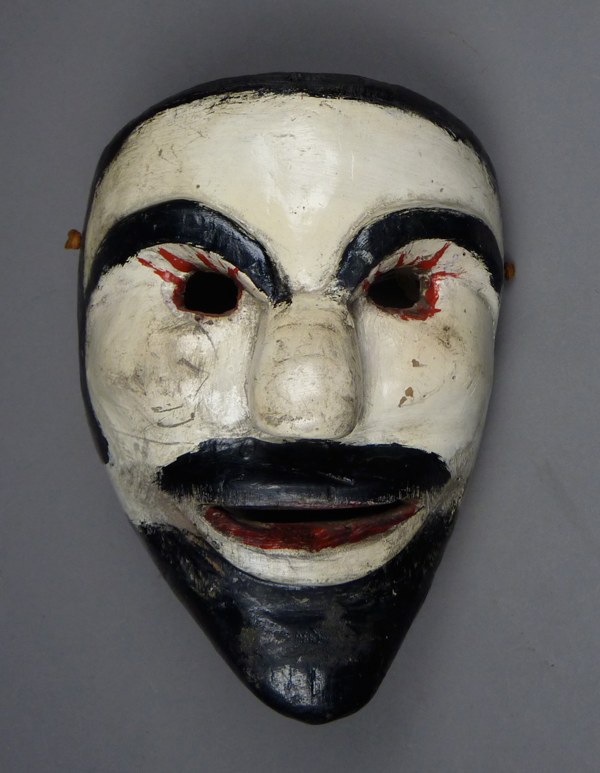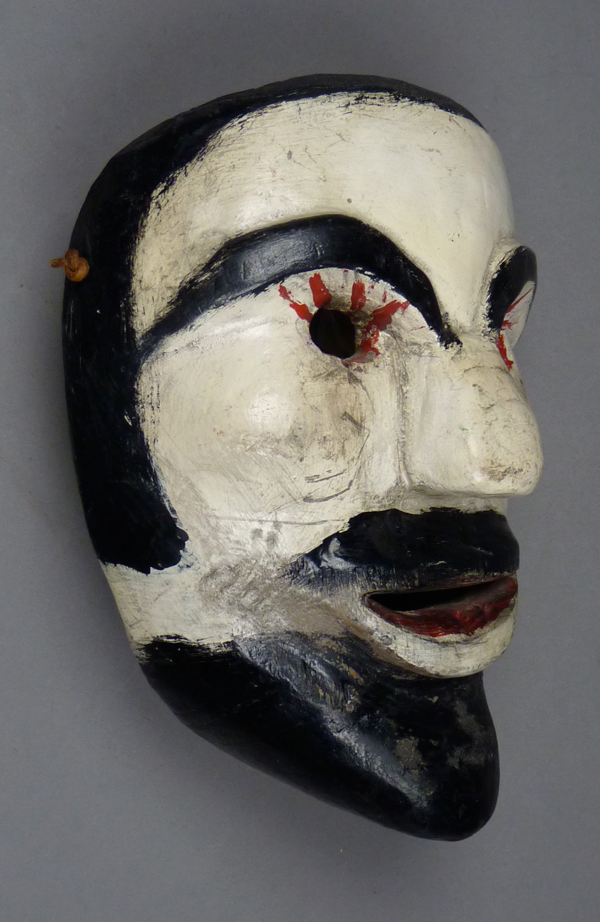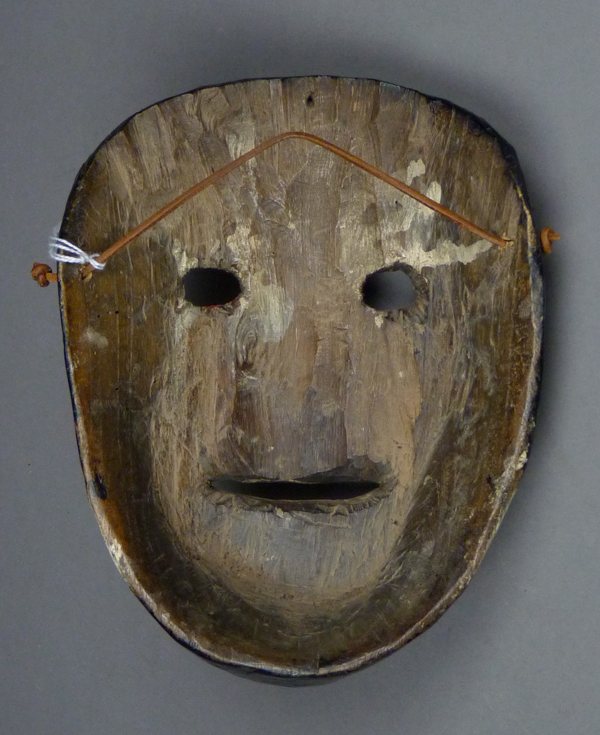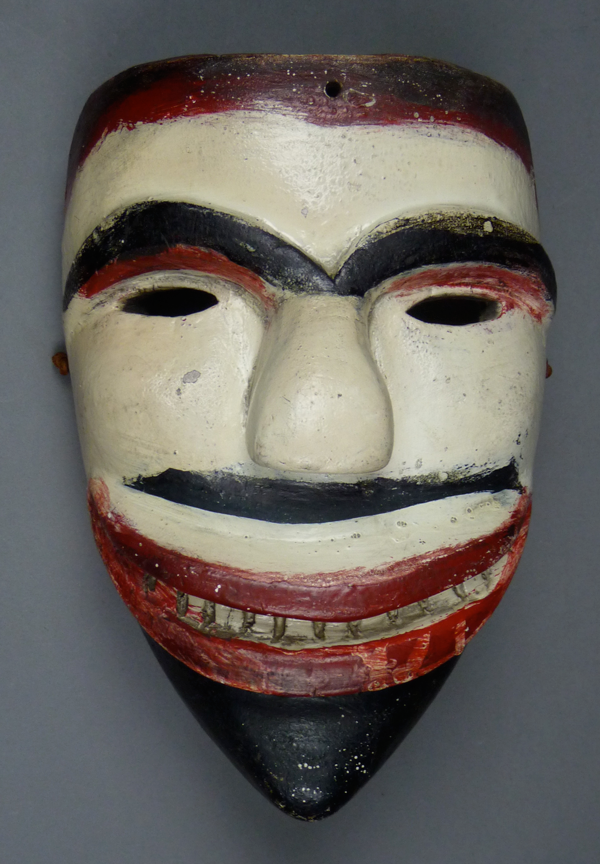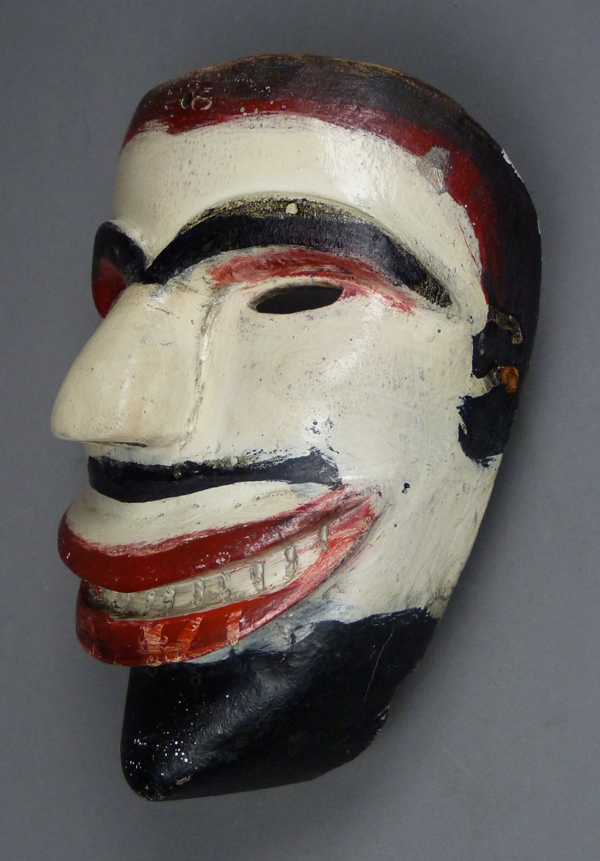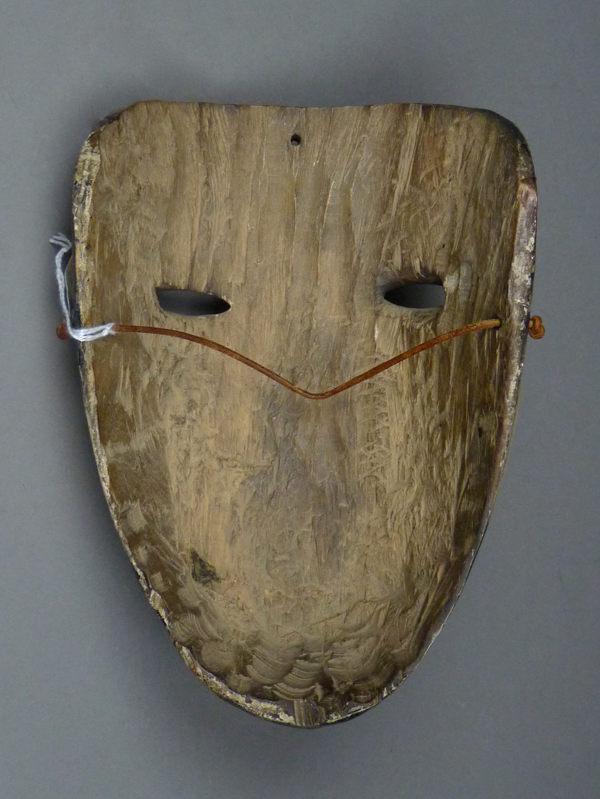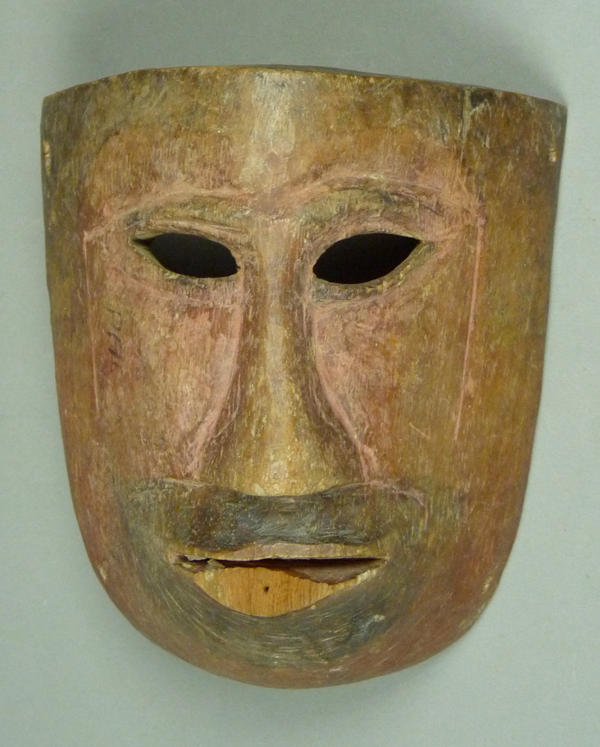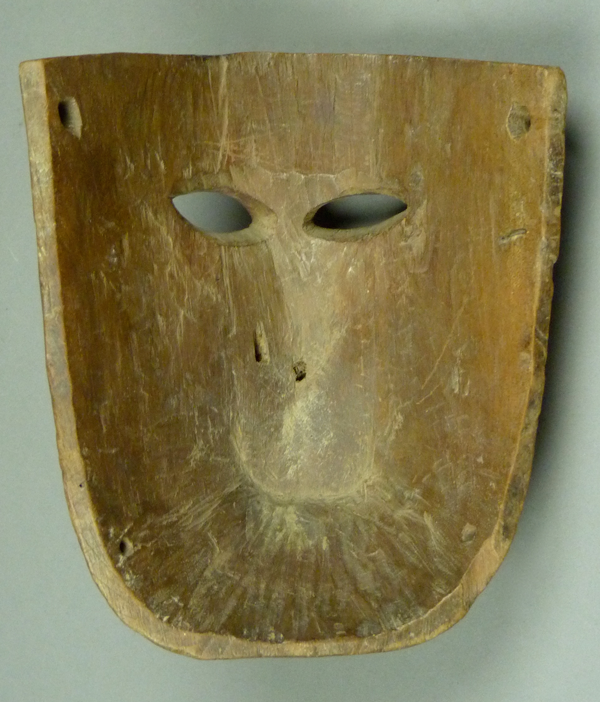Today I will present three masks from San Luis Potosí that were worn for the Xantolos dances. I might remind you that there are Judío or Fariseo masks from this Mexican state that are primarily intended for use during Semana Santa (Holy Week); these tend to be larger and more dramatic than today’s trio. You can find many of those masks in my posts of 3/23, 3/30, 4/6, 4/13, 4/20, and 4/27/2015. As will be apparent from three contemporary videos that follow, the division between these two groups of masks may be breaking down, so that both styles now appear during the Xantolos fiesta, just as we saw in the Xantolos videos from Hidalgo.
Unfortunately I can only write about these SLP Xantolos masks based on a sample of four, the three in my collection and a fourth that was originally collected with the first two; it is now in the collection of the Museum of International Folk Art, in Santa Fe, New Mexico, and you can see it in Masks of Mexico: Tigers, Devils, and the Dance of Life (Barbara Mauldin 1999, page 40).
The first of these Xantolo masks was said to be from Tiliche, San Luis Potosí, but I have been unable to locate that place. The design is traditional for that region, with a white face and black facial hair. I bought this mask from René Bustamante in 1992.
Here is a YouTube™ video from 2013, recorded in Tanquián, San Luis Potosí, that includes Xantolo dancers wearing such masks.
https://www.youtube.com/watch?v=S3FUc1RJ_QI
In that video about half of the masks are carved from wood while the other half are plastic. The dancers use a stamping dance step.
This mask is 8½ inches tall, 6¼ inches wide, and 3½ inches deep.
The mask in the International Folklore Museum collection is very similar to this one in size and design. René estimated that this set of masks dated to about 1950.
The back demonstrates heavy staining, as if from long use.
Here is another video. In this instance, it is obvious that boys are playing female parts. Most of the film focuses on the flowers and offerings for the visiting dead. Do not miss the remarkable Xantolo masks in the middle of this film, with black faces and oversized hooked noses or beaks; these may represent birds. The dancers wearing those masks are smoking an altar with burning incense.
https://www.youtube.com/watch?v=Odh6A9Cm-VE
The second mask was also purchased from René Bustamante in 1992, and it would appear to be by the same hand as the first mask.
The mask has a wonderful smiling mouth. It has been crudely repainted.
This mask is 9½ inches tall, 6 inches wide, and 4 inches deep.
The back on this mask also seems old and worn.
In a third video, one can see how easily girls have been accepted as Xantolo dancers in other areas of San Luis Potosí. This represents a dramatic change from the past, when male dancers invariably played female parts.
https://www.youtube.com/watch?v=DwNWP-mJMvk
The last mask, also from René Bustamante, was said to be from Jaripeo, San Luis Potosí, another town that I have yet to locate. This one resembles Xantolo masks from Hidalgo.
The lower lip is broken. Note the vertical inscribed lines down the cheeks, perhaps to mark the leading edges of sideburns that were never painted in.
This mask is 7 inches tall, 6¼ inches wide, and 4 inches deep.
The back is darkly stained, probably from extensive use.
This ends my review of Xantolos masks from the Huasteca region of Mexico. Next week I will begin a series of posts about the James and Jane Urmston collection of Mexican masks.

